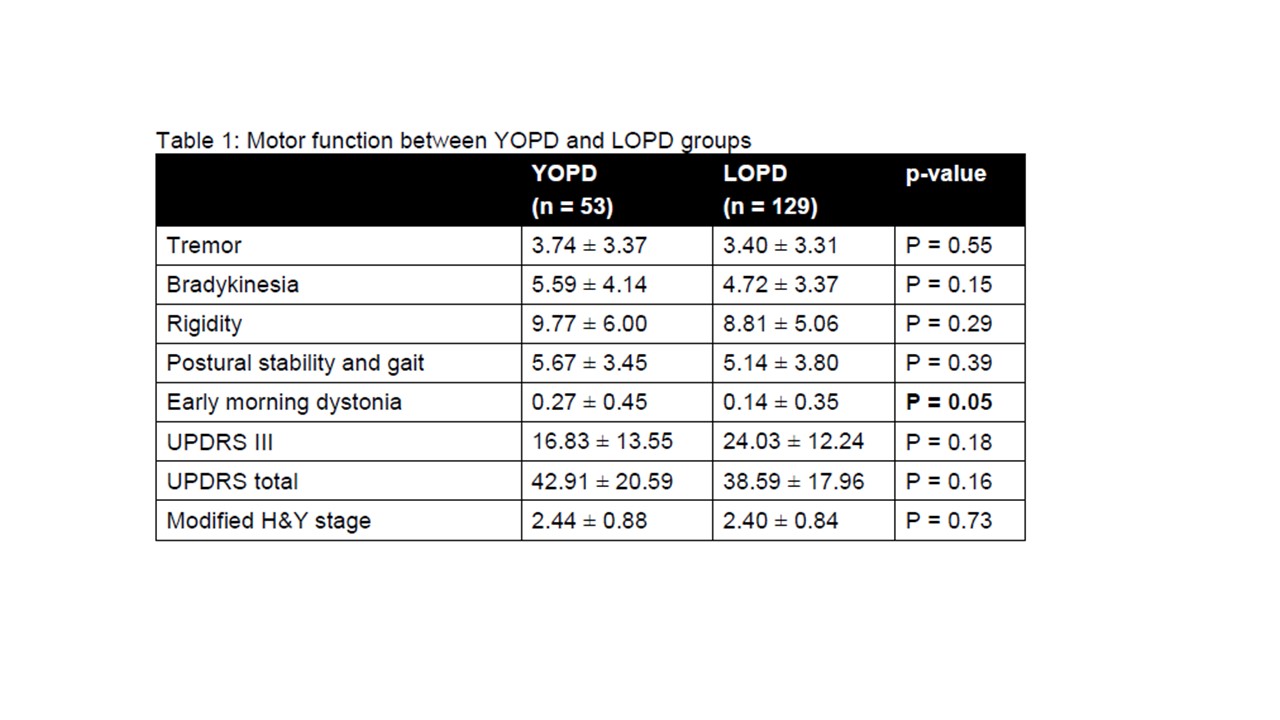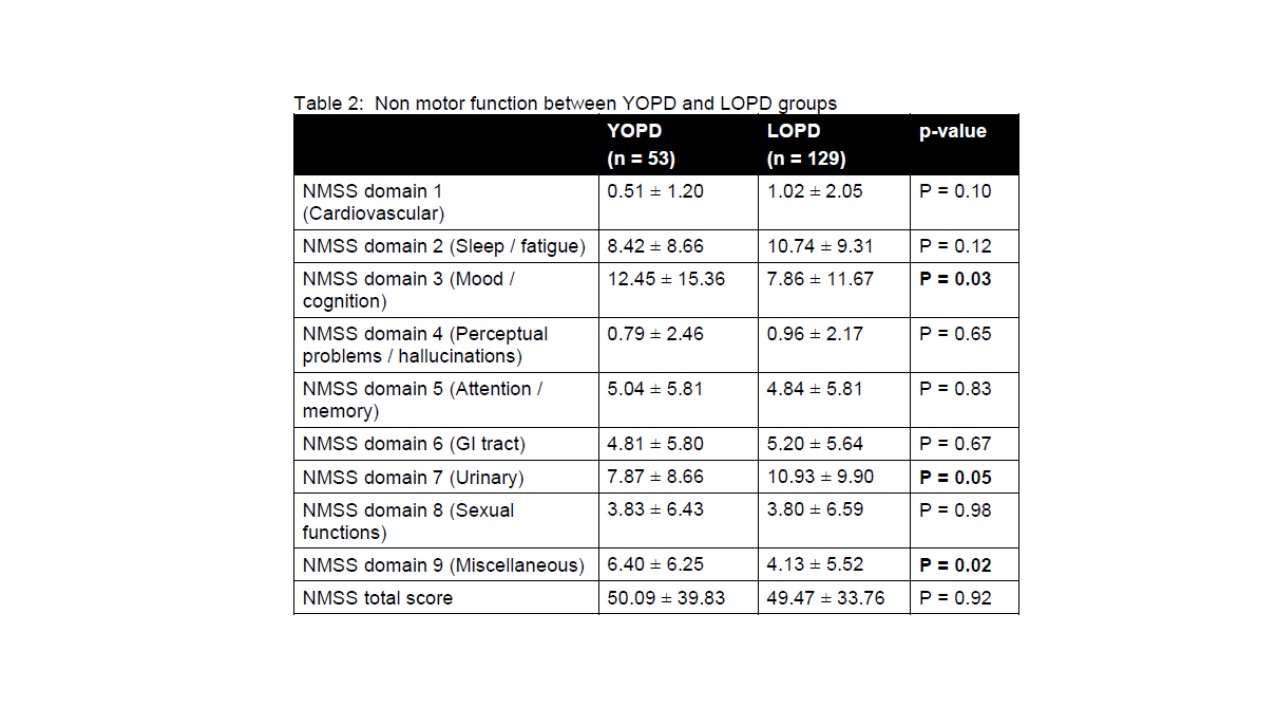Session Information
Date: Wednesday, June 7, 2017
Session Title: Phenomenology and Clinical Assessment Of Movement Disorders
Session Time: 1:15pm-2:45pm
Location: Exhibit Hall C
Objective: To study the clinical manifestations of YOPD and Late Onset Parkinson’s Disease (LOPD) patients
Background: Parkinson’s disease (PD) is a neurodegenerative disease commonly affecting the elderly population. However, there is a group of PD patients who develop the illness much earlier and is known as YOPD. Unfortunately, literature studying this group of patients is scarce.
Methods: Study design: Cross-sectional study
Inclusion criteria: All PD patients who were followed in the multidisciplinary PD clinic of Queen Elizabeth Hospital, Hong Kong
YOPD is defined as those with age of onset ≤ 50 years old while LOPD is defined as those with age of onset > 50 years old.
Method:
1. The demographic information was documented.
2. Their motor function was assessed by a. Modified Hoehn and Yahr (H & Y) Stage; b. Unified Parkinson’s Disease Rating Scale (UPDRS) part III and total score; c. Presence of early morning dystonia.
3. Their non-motor function was evaluated by Non Motor Symptom Scale (NMSS).
4. SPSS version 20 was used for statistical analysis.
5. Chi square and t tests were used to test for differences.
Results: 182 patients were recruited between 2014 and 2016.
The YOPD group had 53 patients, whereas the LOPD group had 129 patients.
Baseline characteristics: There was no significant difference between the two groups in terms of gender, PD subtype and family history. However, as compared with the LOPD group, the YOPD group was found to be younger (54.45 ± 7.77 years in the YOPD group vs. 68.01 ± 7.30 years in the LOPD group, P < 0.00) and have a longer disease duration (10.53 ± 6.32 years in the YOPD group vs. 6.34 ± 4.27 years in the LOPD group, P < 0.00).
Motor function: There was no significant difference between the two groups in terms of motor function except the presence of early morning dystonia (P = 0.05) (Table 1).
Non motor function: In general, there was no significant difference in the NMSS total score between the two groups. Nevertheless, the YOPD group was reported to have more mood and cognitive problems (P = 0.03), while the LOPD group tended to have more urinary dysfunction (P = 0.05) (Table 2).
Conclusions: In conclusion, there was no significant difference in the motor and non-motor function between the YOPD and LOPD groups.
To cite this abstract in AMA style:
H. Chan, Y. Cheung, D. Chau, V. Lo, C. Woo, S. Tse, T. Fung, A. Leung, W. Fong. Young Onset Parkinson’s Disease (YOPD): A different disease entity? [abstract]. Mov Disord. 2017; 32 (suppl 2). https://www.mdsabstracts.org/abstract/young-onset-parkinsons-disease-yopd-a-different-disease-entity/. Accessed December 30, 2025.« Back to 2017 International Congress
MDS Abstracts - https://www.mdsabstracts.org/abstract/young-onset-parkinsons-disease-yopd-a-different-disease-entity/


